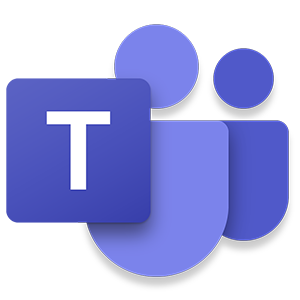Teamwork is an essential part of success of any business. It moves things forward, helps resolve challenges and fosters innovation and creative ideas. However, to establish a healthy and dynamic teamwork you have to build a foundation that will match your business needs. Microsoft Teams is the hub for teamwork in Microsoft 365; a platform that unites people, conversations, and ideas. But in order to successfully adopt this tool across your organization, you need a well-thought Microsoft Teams Adoption Strategy that will accelerate and smoothen the adoption period.
In this and the following articles we will talk about the key elements of a successful Microsoft Teams Adoption Strategy and will guide you through the whole process.
Why Microsoft Teams?

In this fast-paced world our way of working is constantly changing. Particularly remote work has become a common practice and online meetings have now replaced regular office sessions in many companies.
Therefore, these days we increasingly rely on digital collaboration tools to operate our business. In fact, according to Alfresco, 83% of workers rely on digital tools for collaboration.
However, organizations often struggle to establish successful collaboration within their teams. The same survey reveals that 59% of employees face challenges with their organization’s tools. Accordingly, 16% resort to public sharing tools without their employer’s permission.
Microsoft Teams offers a great solution that will help your teamwork collaboration thrive while resolving all the issues regarding governance and security. And since more people now work remotely, with Teams they can receive all the support with staying connected with their colleagues.
Microsoft Teams allows you to connect with anyone from anywhere:
- You can share your thought through chat;
- Meet with up to 10,000 people through video calls, webinars, or live events;
- Call from any device and through phone system;
- Collaborate in real time on important documents through multiple Microsoft and third-party apps.
Why does adoption matter?
Adoption of any software is a challenging and multistage process. It requires change that not all people are willing to embrace from the very beginning. There’s more to it than just learning about a new tool. It’s also about changing people’s way of working and interfering with their routine, that can often be faced with resistance and reluctance from the employees’ side. It’s about people and communication, and you will need all the tools you can get in order to facilitate this change and make the whole process more enjoyable for everyone.
Common challenges with Microsoft Teams adoption
Changing company’s working culture
If everyone in your organization uses Skype for online meetings and resorts to emails to communicate with co-workers, it might be complicated to make them give up their usual way of working and start using completely new software.
Make sure your project team and sponsors communicate the value that the new technology is bringing to your company in order to elevate the fear of change and stimulate the adoption.
Insufficient technical expertise
Lack of knowledge around the software and its capabilities can limit the scope of its use and slow down the adoption process. Therefore, you need to have an expert team onboard that will help you develop scenarios where Teams can be proved effective in your organization.
Lack of executive engagement
Executives play an essential role in digital transformation. Their visibility and active engagement will add credibility to the project and, as a result, facilitate the adoption. However, their lack of participation and enthusiasm will affect your adoption strategy more severely than if you had no executive sponsorship at all. So, make sure to choose the right leader to sponsor the Teams adoption.

Who should be involved?
In order to achieve successful transformation a joint effort from various participants is required. Make sure you have a strong team of supporters that will help your organization go through the adoption process smoothly and effectively.
Within your organization there are 4 main groups that you want onboard for your adoption strategy. Each of them plays an important role and engages with end-users from different levels. Try engaging them regularly since it will facilitate the adoption.
Executive Sponsors
They communicate the vision of the adoption strategy to senior staff thus ensuring their involvement. They also help the project team with identifying organization’s needs and priorities in order to take the right direction in the adoption strategy. Their active use of Microsoft tools and communication with the employees about the software further encourages Microsoft Teams adoption across the organization.
Success Owners
People who are in charge of making the project successful. They can also be referred to as project managers who ensure that organization’s business goals are achieved by helping people adopt and actively use Microsoft Teams. They create an adoption plan, create business scenarios for the use of Microsoft according to company’s needs, communicate with the right stakeholders, and finally make sure the adoption plan is successfully implemented.
Early adopters
These are your company’s employees that will participate in the early launch of Microsoft Teams, thus becoming a part of the Early Adoption Program. the first ones to adopt and actively use Microsoft Teams. Make sure you include them in your Adoption Strategy as they can be a point of reference to other employees and help others when any issues appear.
Champions
These employees are active supporters of Microsoft Teams in your organization. Champions are the ones who were faster and more efficient in using the software in their work and subsequently can help train other employees. They will influence their co-workers, create enthusiasm among the staff about the use of Teams, provide feedback to the project team and also reduce their workload.
How to drive Microsoft Teams adoption?

The five stages of change
Now, as previously mentioned, any adoption process requires a certain behavioral change. While technical knowledge is obviously important, you first need to change people’s negative perception of change.
Change in human behavior doesn’t happen in one day. It’s usually a long multi-staged process. Here we can apply the Prosci ADKAR model of individual change, where ADKAR stands for awareness, desire, knowledge, ability and reinforcement.
The ADKAR model states that whenever an organization undertakes initiative, the change has to be accepted on the individual level.
In short, this model explains that every individual has to, firstly, be aware of the need for change, have a desire to be involved and to contribute to this change, get all the knowledge regarding how to implement this change, and ability to adapt and acquire necessary skills, and, finally, get reinforcement to maintain this change.
Phases of Microsoft Teams adoption
The adoption process can take different amount of time for different organizations, depending on their size and working culture. However, each company goes through similar adoption phases.
Start – at this phase you form initial teams, start using Teams to familiarize with the product and begin planning your adoption strategy.
Experiment – next, you start engaging your champions and early adopters. You work closely with your employees to identify different scenarios that ensure your company benefits most from Teams deployment. You also gather feedback based on which you can make important decisions for a favorable broad-scale rolling-out.
Scale – the final phase of your adoption project. At this point you launch a full-scale adoption for all the employees across your organization. Your staff will require training and demonstrations of all the capabilities of Teams. Therefore, you will need to actively engage with everyone and use support of your champions to encourage the use of Teams for various scenarios.

Categories of employees
There are different categories of employees within your organization that will go through the adoption process at a distinct pace. Your company will therefore go through technology adoption life-cycle, for which you have to find a special approach to each of these categories.
According to Everett Rogers, the technology adoption life cycle goes as follows:

Here are some tips about how to deal with each group in your Microsoft Teams adoption strategy.
Innovators
The first people to deploy an innovation. They are young, initiative and ready to experiment. Allow them to use Teams even if they haven’t mastered it to 100% yet.
Early Adopters
The second fastest category to deploy Teams. They will still require some training and guidance regarding all the capabilities of Teams, so make sure you provide them with all the assistance they need. You want early adopters to be onboard for your adoption project. They will become your supporters and promoters of the software to the rest of the staff.
Early Majority
The category that requires most effort from your side. To help them in the adoption process make sure you have a great training program. Engage your IT team and champions in order to assist them with the understanding of the program. Also include your executive sponsors to promote Teams and understand why they need it. This category requires some convincing, so make sure to use all the tools you have to get them onboard.
Late Majority
This category will adopt the technology at lower than average pace and will require lots of training and guidance. They are usually skeptical to a new technology and reluctant to change, so your approach to them has to be well-organized. Use the same techniques as for the early majority category, but keep in mind that it will take much more time for them to deploy Teams. Encouragement and showcasing best practices will help accelerate the process.
Laggards
The last ones to adopt the technology. A professional way to deal with them will be to allow them to take their time to make the switch from the old software to Teams. Chances are, once they see that the vast majority use Microsoft Teams at workplace, they will adapt to the change.
Microsoft Teams adoption & governance strategy
Now, let’s dive deeper into the key components of a successful Microsoft Teams adoption and governance strategy.

Define your adoption strategy
Before undertaking the initiative, you should have a well-thought strategy that will guide you throughout the adoption process.
Make sure your core team is involved in developing your objectives. Determine your business goals and potential challenges. Engage your IT teams, project managers, decision makers and other stakeholders to better understand your company’s business needs and challenges and brainstorm about different scenarios where your organization can benefit most from Microsoft Teams.
Think about the communication process in your business. What are its main pain points? How does your staff share information? In what area would you like to improve? How can Microsoft Teams support the projects that your company is currently undertaking?
Answering these questions will help you define your strategy for Teams adoption.

Vision of the Microsoft Teams adoption project
A well-defined vision with a clear understanding of how to use the technology will help your company be more successful in the adoption process. Your vision should establish long-term goals and respond to your business needs.
The vision should inspire and motivate individuals to get actively involved and support you. It gives a meaning to the project, sets goals that unite everyone since it requires a joint effort.
A clear and laconic vision:
- Helps your staff understand the value the project will bring to the company
- Allows to secure project membership within the organization
- Facilitates the change management process
Engage all the stakeholders who will support and lead the project to define a collective vision.

Executive sponsorship
Involvement of executive members is essential for the adoption process. They have the authority that allows them to influence and motivate their workers to adopt a new way of working. Executives serve as an example to follow for fellow employees.
Moreover, leadership involvement ensures the adoption process is moving in the right direction and is aligned with other business’s projects. Executives also manage relationships with other stakeholders involved in the process and make sure their activities are consistent with the company’s vision.
Studies suggest that that executive engagement makes the transformation more successful.
Executive sponsors must:
- Assist the project team with defining and prioritizing business scenarios.
- Communicate project’s vision to other members of the senior staff of the company.
- Use Teams for work to serve as an example for fellow employees.
- Be visible and communicate actively with employees.
To delve deeper on how to create a vision and establish executive sponsorship head over to this article.

Defining business scenarios
Business scenarios are the ways your company will use Microsoft Teams. The express your organization’s business needs.
Scenarios allow your employees understand how Microsoft Teams can improve their work and collaboration to get better results. It’s not enough to just showcase the product. You have to show your staff when and how they can use it and why they should do it.
By providing a business context you increase awareness of the Teams capabilities among your workers and validate the need for adoption.
→Download: Catalog of Microsoft Teams Use Cases

Defining Governance
When it comes to Microsoft Teams adoption strategy, you should establish different types of governance that involve different participants and have distinctive objectives.
Project Governance
It’s the framework of authority that defines decision that made around the project. It gives a structure to the project and determines accountability of different stakeholders involved in the project.
Project Governance involves a project manager, sponsors, success owners, champions and Microsoft experts. A sponsor plays a key role in project governance and serves as a mediator between all the other stakeholders.
Information Technology Governance
It provides a structure to align IT strategy with business strategy. It ensures that IT investments support your company’s business goals.
Additionally, it makes sure the organization follows all the regulations concerning protection of private and confidential data, financial accountability, data retention and others.
IT Governance includes managing the deployment strategy, user support center, governance of data and tracking of incidents.
Among key stakeholders of IT Governance are CIO, IT sponsor, IT project managers, IT partner and Success Owners.
Executive Governance
Its main objective is to ensure the business success of the project. Executive Governance covers addressing roadblocks, tracking progress, sharing feedback and organizing meetings with executive sponsors. These meetings should be held once every month or three months, depending on the stage of the adoption and organizational needs.
Microsoft Teams Governance
It applies directly to the use of Microsoft Teams software. It determines how Teams will be used by the end-users. Teams Governance includes governance of private channels, naming convention, targeting audience, security setup, establishing permanent members and approval workflow.

Success criteria
In order to prove your project’s success and increase executive membership you must demonstrate return on investment and positive impacts of the Microsoft Teams adoption on your organization.
It can be challenging to define ROI for a software adoption. Rather than focusing only on the financial impact, you can determine many other success criteria that will help you evaluate how well your adoption project is rolling out.
Use your business scenarios to see how your KPIs improve after adoption. Then set SMART goals for each of your KPIs.
Here are a few examples of success criteria that you can use for your business:
- Reduced time to complete customers’ orders
- Reduced time on meetings and meetings’ preparation
- Faster follow-ups after meetings
- Improved engagement of employees in company’s activities.
After determining your KPIs, evaluate the progress using qualitative and quantitative methods. For instance, it can be end-user and employee surveys, finance/accounting reports, Teems feedback, etc.

Communication plan
Previously we mentioned the 5 stages of change – awareness, desire, knowledge, ability and reinforcement. In order to make the transition between these stages as smooth as possible you need a well-thought-out communication plan.
There are 3 stages of the communication plan: pre-launch, launch and post-launch.
Communicating with your staff before the launch of the adoption project is key for creating awareness among your employees about the upcoming change and contributing to desire. This can be done through promotional flyers, video teasers and other tools.
In the launch stage you give your employees knowledge and ability through training, business scenarios, lunch sessions, etc.
And in the last stage you provide reinforcement by continuing education, memberships in user clubs, receiving feedback and so on.
The goal of the communication plan is to stimulate employees’ interest, encourage them to use a new tool and give tips to get the most out of Teams.

Training plan
Training is a crucial part of your Microsoft Teams adoption strategy. Since new features appear regularly make sure the training becomes a part of your work routine. You may add new elements to it with each product update.
Make sure your training is personalized, fun, and engaging. Try using different formats to add elements of surprise. Change location and learning styles: for example, mix your on-site and office trainings with webinars, games, and sessions at cafés.
Make sure to use business scenarios in order to help your employees understand why they need the change and how to adopt it.
Add different training options to reinforce adoption, such as training on demand, lunch & learn sessions, and training of new hires.

Champions network
Develop your network of technology champions by engaging those members of staff who are most enthusiastic about Teams and promoting it to their colleagues.
Together with executive sponsors, champions are key for your adoption strategy. Indeed, learning from fellow co-workers is one of the most effective ways of fostering this transformation.
They are your ambassadors who support fellow co-workers in their understanding of the software and its adoption.
There are various ways to recruit them. Look for Champions among your innovators and early adopters – some may come on a voluntary basis. You can also spot the most active employees in Teams or Yammer through posts and discussions. Ask the heads of business departments to spread the word about the champion network and call for action in different communication channels.
After establishing your champions network make sure to motivate them, for instance by offering different perks and bonuses.
These are the 9 key elements of a successful Microsoft Teams adoption strategy. You will learn more about each of them in the following articles of our series Microsoft Teams adoption and governance.
Read our blog and keep up to date with the latest news in the industry.
